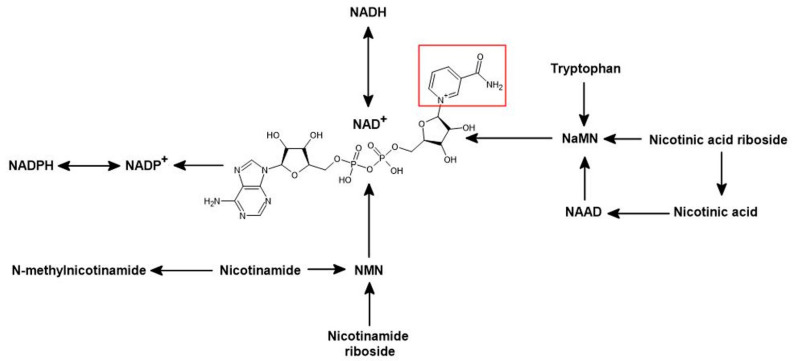Figure 1.
NAD+ metabolism in eukaryotic cells. NAD+ anabolism from tryptophan occurs by the de novo kynurenine pathway (KP). NAD+ precursors via the salvage pathway include nicotinamide (NAM), nicotinic acid (NA), nicotinamide riboside (NR), and nicotinic acid riboside (NAR). The enzyme nicotinamide phosphoribosyltransferase (NAMPT) converts NAM to nicotinamide mononucleotide (NMN). Nicotinamide mononucleotide adenylyltransferase (NMNAT1-3) converts NMN to NAD+. NAM can be methylated to N-methyl-nicotinamide (MeNAM) by the action of nicotinamide N-methyltransferase (NNMT). NADH represents the reduced form of NAD+. NADP+ is the phosphorylated form of NAD+. NADP+ can be reduced to NADPH by NAD kinases (NADK1,2). PARPs, Sirtuins, and CD38 NAD+ glycohydrolases are known as NAD+ consumers, leading to the generation of NAM. Nicotinic acid phosphoribosyltransferase (NAPRT) converts NA to nicotinic acid mononucleotide (NAMN), which is then converted to NAD+ by NMNAT1-3. NAR needs to be converted to NAMN to yield NAD+ synthesis via nicotinamide riboside kinases (NRK1,2). NRK1,2 also convert NR to NMN. NAR can form NA via purine nucleoside phosphorylase (PNP). PNP are also capable of converting NR to NAM.

